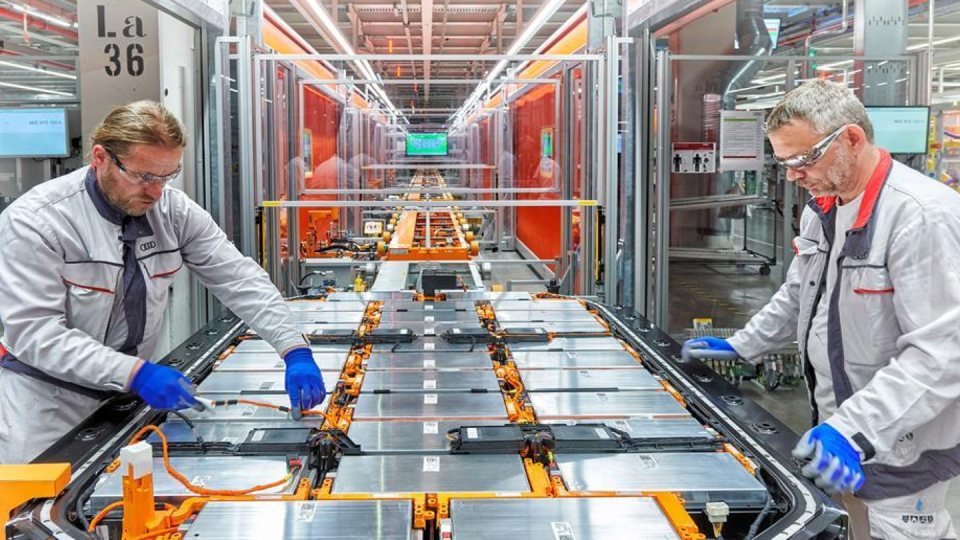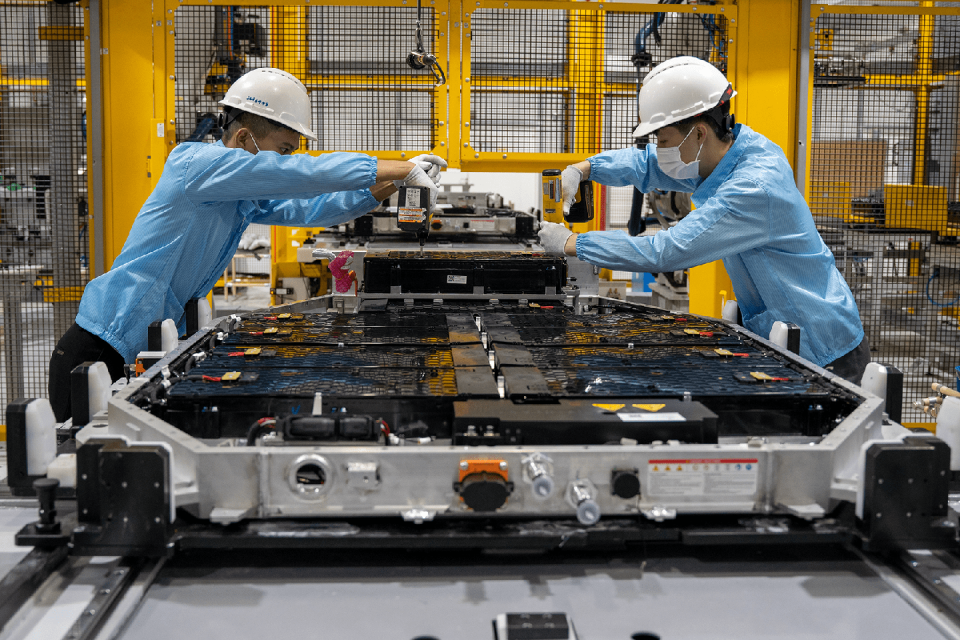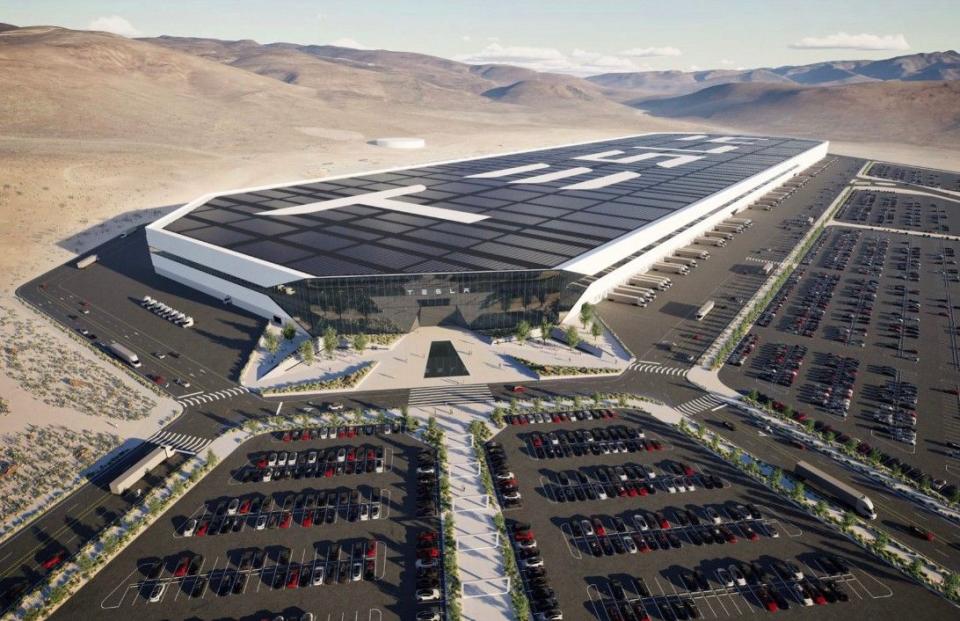Battery Plant Scrap Rates Can Hit 90% at Ramp Up, but the Situation is Improving

As a battery production facility ramps up, scrap rates can reach upwards of 90%.
All that scrap waste costs a producer a lot of money, which in some cases can take four years to recoup.
Much of that scrap waste is also hazardous, though there are a handful of companies that will recycle it.
Launching a large-scale, automated electric-vehicle battery plant is a costly affair, not least because of the horrendous wastage that generally occurs in the pilot production phrase.
Although the scrap rates ramp down fairly quickly, the discarded material can be a heavy cost for companies in the early stages. And the scrap isn’t just unfit for use—it’s hazardous waste that the companies spend millions getting to a recycler.
“What we’re seeing, especially in first-year yields, is dismal, tiny. In some cases, just 10% to 20% of production is usable,” said Dr. Tal Sholklapper, a co-founder of the Voltaiq startup, which uses analytics to comb through data and advise battery companies on improving those yields.
“The bottom line is that, with our current understanding of lithium-ion batteries, scrap rates are incredibly high,” he said. “It can be a three- or four-year journey to get to profitability.”
At CES in January, Voltaiq announced a partnership with the Germany-based technology company Siemens “to help rapidly scale operations smoothly, from initial testing to full-scale production lines.”
According to a report from Grand View Research, the global battery market was valued at $104 billion in 2022, and was expected to expand at a compound annual growth rate of 15.8% between 2023 and 2030.
Obviously, the world is going to need a lot more big battery plants, and it’s critical that they operate efficiently and achieve the profitability they need to stay in business. North American battery-making capacity will go from an annual 55 gigawatt-hours (GWh) in 2021 to almost 1000 GWh per year in 2030, the Department of Energy said.

Eli Leland, chief technology officer and Voltaiq’s co-founder, told Autoweek, “At the early stage for battery startups it’s all about speed, getting to next-performance technology targets to maintain competitive advantage. It’s getting the factory running at high yields so the company doesn’t burn through all the cash. If they miss important insights buried in the data, they’ll make mistakes and be too slow.”
Leland said the problems happen when a line is cranked up “and you’re making thousands of cells a day, and throwing most of them away.” According to Voltaiq, reducing scrap rates by just one percentage point can mean tens of millions in added profit annually. The company calls its process of AI-aided data collection, analysis, and interpretation of the charge-discharge cycle Enterprise Battery Intelligence.
The Information quotes “a widely distributed independent analysis” that puts the scrap rate at the Tesla/Panasonic Gigafactory at 84% in the third quarter of 2017, soon after production started in Nevada. In its third quarter 2017 update, Tesla said its “primary production constraint” was in the Gigafactory 1 line that produced battery modules. “The combined complexity of module design and its automated manufacturing process has taken this line longer to ramp than expected,” Tesla said.

Tesla was then looking for efficiency improvement in battery production: “We have redirected our best engineering talent to fine-tune the automated processes and related robotic programming, and we are confident that throughput will increase substantially in upcoming weeks and ultimately be capable of production rates significantly greater than the original specification.”
In the summer of 2018, Tesla said, “Our scrap rate for batteries has decreased by almost 60% since January as we have improved our manufacturing processes.” By 2019, analysts were being told that yields at the Gigafactory had improved to 75%. But Tesla’s scrap costs during the Gigafactory’s ramp up were very high.
One of the few advantages of high scrap rates is that, while the supply of spent EV batteries is low, it provides raw material for the recyclers. Redwood Materials, which says it’s creating a circular global battery supply chain and creating new anode and cathode components from the industry’s waste, gets 50% of the 40,000 metric tons of raw material it processes annually from scrap, the company said.
Of course, if scrap rates fall dramatically it could be harder for recyclers to get that material. A 2024 report in the Journal of Power Sources concludes that “manufacturing scraps will serve as the primary sources for recycling in this decade.”
But more end-of-life batteries are starting to become available for recycling. According to Circular Energy Storage, 11.3 gigawatt-hours of EV batteries were retired in 2022, but that should increase hugely to 138 GWh by 2030.
And scrap is becoming dramatically more valuable due to a clause in the Inflation Reduction Act (IRA), which says foreign-made batteries, after recycling, are qualified for subsidies as if they were made in the US. Right now, battery recycling is mostly done in China, but startups such as Nevada-based Redwood, Canada’s Li-Cycle, and Massachusetts-based Ascend Elements are changing that.
According to a Reuters report quoting BMW, the minerals in a single car’s battery (principally lithium, cobalt, and nickel) can be worth $1123. But scrap is not yet a lucrative revenue source for battery makers.

Scrap rates definitely do come down dramatically as plants mature. Sam Abuelsamid, principal analyst for transportation and mobility at Guidehouse Insights, said 80% to 90% scrappage rates are likely to occur “during the very earliest pilot production phase, when equipment is still being set up. That said, I have heard that Tesla’s scrap rate in trying to dry-coat cathodes for 4680 cells may well be that high.”
But, Abuelsamid said, “I fully expect scrap rates from cell manufacturing to have a meaningful decline over the course of this decade. The number of production facilities is climbing steadily and scale is increasing. It’s almost inevitable that as data available from that scale grows, knowledge about how process variations impact quality and reliability improves, and that in turn leads to optimizations that can improve quality control and yields.
“If scrap rates at battery plants weren’t declining, we’d need to seriously rethink how cells are actually being produced.”
Panasonic did not respond to a request for current Gigafactory scrap rates. The company agreed in 2022 to buy cathode material for battery cells from Redwood. Katie Burdette, communications manager of GM’s Ultium Cells, told Autoweek, “We refrain from sharing specific plant performance information, such as productivity and quality, with the public for proprietary reasons.”
According to Reid “Rusty” Heffner, chief technologist at Booz Allen Hamilton’s Climate and Infrastructure Practice, “Battery companies are protective of their yield numbers.” He said high scrap rates during startups “need improvement.”
There won’t be much disagreement with that. “The reality is that battery manufacturing at large scale is still in its infancy,” Voltaiq’s Sholklapper said.

 Yahoo Autos
Yahoo Autos 